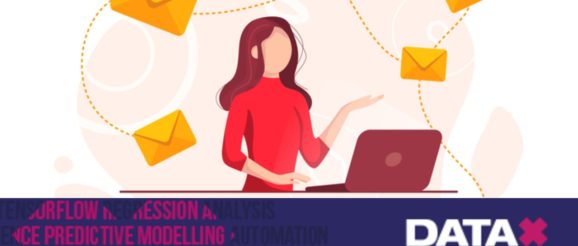How Artificial Intelligence Can Benefit Email Marketing | Articles | Innovation | Innovation Enterprise

Many of us first heard of artificial intelligence from science fiction books and movies, where smart machines and robots helped brave space conquerors explore other universes, or built new high-tech communities on Mother Earth. Though this future full of technological wonders is yet to come, we’ve already witnessed lots of other AI-supported achievements, from smart homes to personalized medicine.
Like many other industries, email marketing has also undergone transformations steamed from AI-powered solutions. For the last several years, AI has been crucial for customer personalization, data analysis, and the design of cost-effective campaign strategies. Regardless of the type, businesses willing to be ahead of the game had to learn to use AI to upgrade their email marketing approaches.
So how exactly artificial intelligence algorithms can be applied to your particular brand? As with other marketing tools, you use AI depending on your business goals, budget, audience type, and more. However, there are basic applications that can deliver reinforcement tactics to stimulate the overall email marketing efforts of any company.
5 ways AI can grow email revenue
With email campaigns becoming more diverse and personalized, manual analysis is becoming a thing of the past. The more contacts you have, the more parameters are there to evaluate. To not bombard your subscribers with potentially irrelevant campaigns that can eventually create you a reputation of a spammer, you need to properly analyze all the data you’ve managed to gather. Browse history, website cookies, signup forms, surveys, social media accounts — AI can analyze all the info collected via any communication channel and from a website. In email marketing, most commonly used filters for analysis include:
Based on this information, machine algorithms automatically make changes to campaigns in real-time, meaning you no longer need to create additional segments or conditions to follow all changes in customer preferences.
1. Personalized recommendations
With competition so intense, it’s no longer enough to produce a high-quality product simply because everyone does so. Companies that offer poor service don’t stay long in the game, so be ready to fight for the customer’s attention with professional competitors. AI-supported algorithms can give you a hand in this fight by enabling you to come up with more relevant recommendations and react to behavior changes as soon as practical. Based on browser search, they can build “you may also like” and “also bought” sections. For example, if during the previous session the person checked the prices for only one kind of product, let’s say, sports shoes, the next campaign would offer this particular category in the “we recommend” or “staff choice” section.
2. Frequency priority
The system analyzes how often particular types of emails are opened and clicked through, and schedules sending correspondingly to avoid multiple unsubscribes and to maximize customer response. Those contacts who open emails regularly would receive messages, for example, once a week; contacts who open only one of 5 emails would receive fewer campaigns.
3. Product priority
If the customer spent five sessions looking through the sports shoes section, and only two sessions checking shoe care products, the AI algorithm would build the recommendation section taking into account this priority: the first displayed product would be sneakers from a new collection, and the second, a brush shoe cleaning kit.
4. VIP segmentation
Depending on average transaction value and general purchase frequency, customers can be offered products of the same range but different price categories. There is little use in recommending luxury picks to people whose previous purchases never exceeded $30. However, if a customer spent, let’s say, $200 on a limited-edition pair of shoes, you may offer them a VIP loyalty program or a look at products released in collaboration with celebrities.
5. Time preference
Some people prefer reading mail in the morning with a clear head; some open emails during the lunch break; some take their time while commuting from work. Whatever the preferences, AI algorithms would register it and modify the sending schedule depending on each contact’s preferences.
How it works in practice
Let’s say you’re planning to send a product promo of a new men’s sneaker collection to 50,000 contacts. You build the basic segment that looks like this:
However, out of these 50,000 contacts, 25% read the previous promos in the morning and 30% at night. Thirty-five percent also checked the recommended products, and 50% weren’t interested. The average transaction value of 60% didn’t exceed $100, but 7% made purchases on $500 or more. Some customers browsed for shoe care products, and some looked through complementary accessories. All this data is processed by AI, and the necessary adjustments are made within one segment individually for each contact. You create one template with the general body, and the AI system fills it with corresponding products picked for particular customers.
To sum up
Depending on your business goals and overall marketing strategy, artificial intelligence can contribute to the email campaign creation in many ways:
But keep in mind that the capabilities of AI heavily depend on the amount of information: the more customer data the organization collects, the more precise the analysis will be. So, use any possibility to learn more about people whom you offer your service or product: from the preferred language of communication to sending frequency, any detail can help you build a more segmented contact base.
